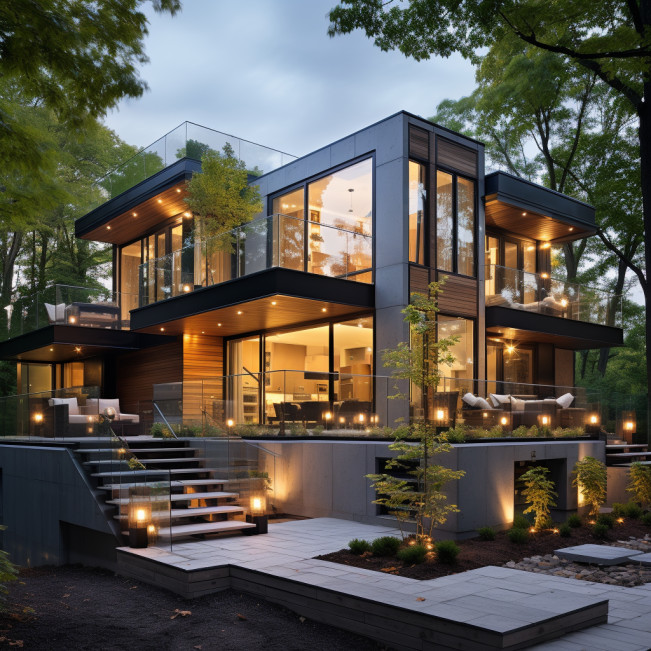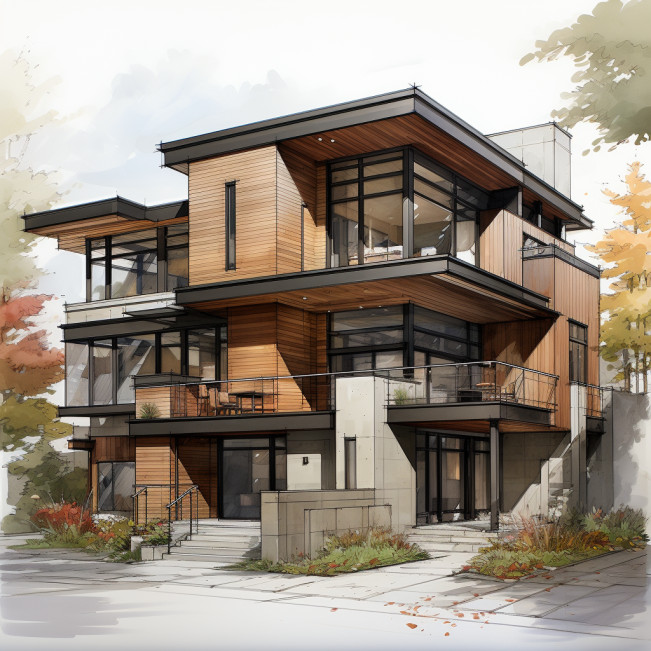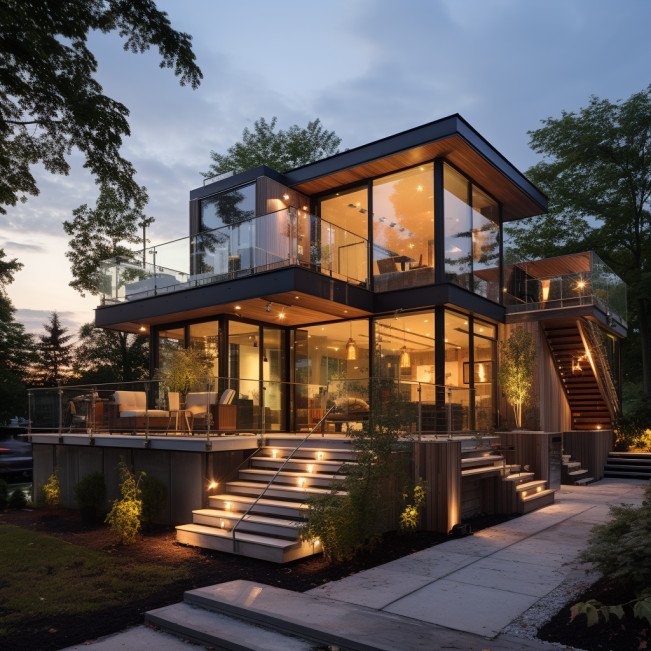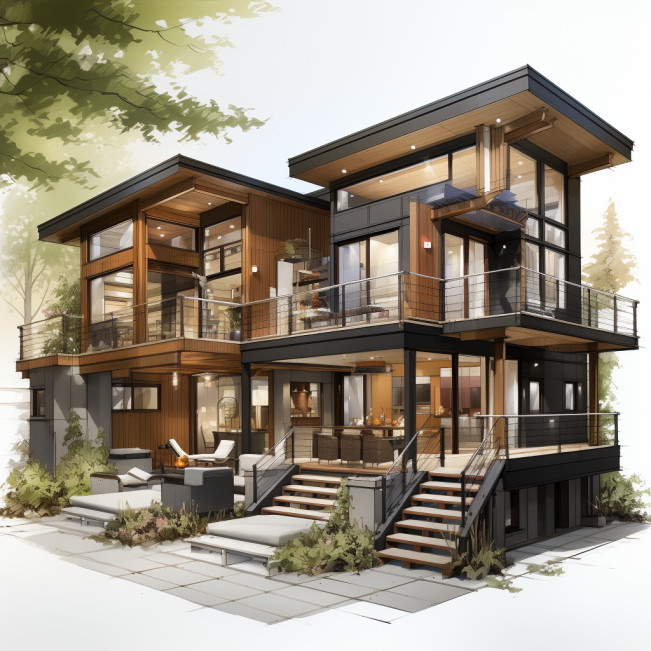
Infill home have become increasingly popular in urban areas due to their numerous benefits and positive impact on communities. This article explores the advantages of infill homes, the different types of designs available, and the sustainable construction methods used in their development.
Additionally, it examines how infill housing contributes to the enhancement of urban neighborhoods and the overall community. Gain valuable insights into the growing trend of infill development and its significance in the realm of urban housing.
Table of Contents
The Benefits of Infill Homes
Infill homes provide numerous advantages, including increased housing options in established neighborhoods and the efficient use of existing infrastructure.
Infill housing refers to the development of new homes within already built urban neighborhoods, rather than expanding into undeveloped areas. This type of development allows local governments to make the most of existing infrastructure, such as roads and utilities, reducing the need for costly new development projects.
Additionally, infill homes can help revitalize existing neighborhoods by adding new residents and businesses, increasing community vibrancy. However, there are major challenges to infill development, such as the need to consider the impact on existing homes and the concerns of community members.
Nonetheless, the benefits of infill homes, including the creation of additional units and the preservation of open spaces, make them a valuable solution for urban housing needs.
Different Types of Infill Designs

One of the key considerations when exploring infill designs is the range of options available to fit seamlessly into existing urban landscapes. Infill homes offer a unique opportunity to revitalize inner city areas and enhance established neighborhoods.
With the flexibility of building on an existing lot, new construction can be tailored to meet the specific needs and desires of homeowners. Custom homes can be designed to blend in with the surrounding architecture, preserving the character of the neighborhood while introducing modern features and amenities. This creates a harmonious balance between old and new, evoking a sense of nostalgia and excitement for the future.
Infill properties also provide an opportunity for individuals to own a single detached home in highly sought-after residential lots, making it an attractive option for those looking for new homes in established neighborhoods.
Sustainable Construction Methods for Infill Homes

Sustainable construction methods for infill properties prioritize environmental responsibility and long-term resource efficiency. Infill homes, which are built on vacant or underutilized land within existing urban areas, offer a unique opportunity for sustainable development. By utilizing environmentally friendly construction techniques, such as using renewable materials and incorporating energy-efficient systems, these homes can contribute to the overall sustainability of the neighborhood and community.
Sustainable construction practices not only reduce the environmental impact of the construction process but also improve the long-term affordability and livability of the housing. By maximizing the efficient use of land and resources, infill development can help create more vibrant and walkable neighborhoods, reduce urban sprawl, and promote community connectivity.
Additionally, the integration of sustainable construction methods in infill homes can enhance the overall sustainability and resilience of communities, ensuring a better future for both residents and the environment.
Enhancing Urban Neighborhoods With Infill Housing

Enhancing urban neighborhoods with strategically placed housing developments can lead to increased community connectivity and vibrant, walkable areas.
Infill housing, which involves constructing new homes on vacant lots within established neighborhoods, offers numerous benefits for both residents and the overall neighborhood.
Some of the benefits of infill housing include:
Preservation of existing community character: Infill development allows for the revitalization of underutilized properties, preserving the unique character and charm of the neighborhood.
Increased property values: Well-designed infill housing can increase property values for both existing and new homeowners, boosting the overall economic health of the neighborhood.
Enhanced community amenities: Infill housing can lead to the development of new parks, green spaces, and community facilities, providing residents with improved quality of life.
The Community Impact of Infill Development

The community impact of strategically placed housing developments within established neighborhoods can result in increased connectivity and a more vibrant and walkable area.
Infill development, which involves the construction of new homes or secondary suites within existing neighborhoods, has become increasingly popular in urban areas experiencing growth and development. By utilizing vacant lots or underutilized buildings, infill development can minimize the need for new infrastructure and permits, reducing costs and environmental impact.
These developments also provide an opportunity to enhance the amenities available to the community, such as parks, schools, and shopping centers. Additionally, infill housing can help create a diverse mix of residents, promoting social interaction and a sense of belonging.
Ultimately, the community impact of infill development can lead to the revitalization of neighborhoods, fostering a more connected and vibrant community.
Frequently Asked Questions

Are There Any Specific Zoning Regulations or Restrictions for Building Infill Homes in Certain Areas?
Zoning regulations and restrictions for building infill homes vary by location. Local authorities may have specific guidelines regarding setbacks, height restrictions, lot coverage, and design standards to ensure compatibility with existing neighborhoods.
How Can Homeowners Finance the Construction of an Infill Home?
Homeowners can finance the construction of an infill home through various methods, such as obtaining a construction loan from a bank, using personal savings, securing a home equity loan, or exploring government programs that offer incentives or grants for infill development projects.
What Are Some Potential Challenges or Obstacles That May Arise During the Construction of an Infill Home?
Potential challenges or obstacles that may arise during the construction of an infill home include zoning and building code compliance, limited space for construction equipment and materials, neighborhood opposition, and potential delays due to unforeseen site conditions or weather.
What Are the Typical Timeframes for Completing the Construction of an Infill Home?
The typical timeframes for completing the construction of an infill home can vary depending on various factors such as the size and complexity of the project, availability of materials, and weather conditions.
Are There Any Specific Design Guidelines or Requirements That Need to Be Followed When Constructing an Infill Home?
When constructing an infill home, it is necessary to adhere to specific design guidelines and requirements. These guidelines ensure that the home is compatible with the surrounding neighborhood and meets the necessary standards for construction.
Conclusion
Infill homes offer numerous benefits, such as revitalizing urban neighborhoods, maximizing land use, and promoting sustainable construction methods.
Different types of infill designs provide flexibility in meeting diverse housing needs.
Sustainable construction methods, such as using eco-friendly materials and energy-efficient technologies, contribute to reducing environmental impact.
Moreover, infill development can have a positive community impact by providing affordable housing options, improving walkability, and fostering a sense of community.
Overall, infill housing plays a crucial role in creating vibrant and sustainable urban environments.
